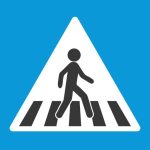Stress, Displacement, and the Benefits of Deep Breathing

Building on an earlier article on AddictionNews about moderating stress using breathing exercises, today we are taking a closer look at how that mechanism works. Our journey takes us to Italy, where two separate reports explain the connections between breathing and stress.
First up is a review of the literature on breathing and the central nervous system (CNS) by a team of five researchers at universities across Italy published in 2018 in the journal, Cureus. The researchers begin their summary with a bold statement: “The functions of the diaphragm do not stop locally in its anatomy but affect the whole body system.”
They proceed, from head to toe, to examine how breathing influences the CNS. In this paragraph, the researchers connect dysfunction in the diaphragm to cognitive decline:
The clinical intent is to remember that the diaphragm can have multiple utilities to improve the symptomatic picture of chronic diseases. In chronic diseases, a decline in cognitive activity takes place concomitantly with an alteration of the respiratory function observed in Chronic Obstructive Pulmonary Disease (COPD), obstructive sleep apnea (OSA), fibromyalgia, chronic heart failure (CHF), and chronic low back pain (CLPB).
The researchers describe a fascinating sort of brain breathing, where breathing results in brain mass compression and cranial return, causing wave-like movements in cephalic-rachid fluid which is involved in “bringing nutrients, collecting metabolic cellular wastes, and regulating cerebral pressure.”
Regarding neural oscillations, the researchers state that “breathing, in particular, affects the gamma waves […] which also influence the limbic and motor areas of the cortex.” Rhythmic breathing reduces neural oscillations and “always stimulates cognitive activity.” Finally, the researchers also trace impacts on the brain from blood flow stimulated by respiration. Respiration-related changes in blood pressure result in changes in electrical signaling in the brain.
The second report on breathing and stress comes from Alfonso Troisi, a professor in the Department of Psychiatry at the University of Rome Tor Vergata. He begins:
A promising approach to the study of the behavioral correlates of stress is to analyze those behavior patterns that ethologists have named displacement activities and that, in primates, consist mostly of self-directed behaviors.
Displacement is the release of a buildup in brain energy resulting from stress. As Dr. Troisi rather subtly puts it, “Displacement behavior appears in situations characterized by social tension and is likely to reflect increased autonomic arousal.” In other words, a stressful situation leads to more rapid respiration, sweating, and other autonomic responses. Dr. Troisi describes some of the sources of displacement behavior:
- situations of “motivational conflict,” or the desire to engage in conflicting behaviors simultaneously
- situations where goal-directed behavior is thwarted
- the heart rate for monkeys goes up after a fight and down after being groomed
- all incidents of displacement have in common anxiety and uncertainty
Dr. Troisi goes on to explain the impact of pharmacological treatments: “The frequency of occurrence of displacement behavior is increased by anxiogenic compounds and decreased by anxiolytic drugs.” That is, the displacement behavior increases with drugs that cause anxiety, such as caffeine or other stimulants, and decreases with drugs that reduce anxiety, in this case, lorazepam.
Most of the research cited in the review was done on monkeys; however, some of the human trials are fascinating. People using silent film from interviews were more accurate in assessing anxiety disorders than trained physicians or self-reporting. Dr. Troisi found a significant correlation between the evaluations of clinicians using the Brief Psychiatric Rating Scale to evaluate 28 schizophrenic young men, and the evaluations of untrained persons watching silent video using the Ethological Coding System for Interviews (ECSI).
The ECSI is basically looking at body language. It includes grooming, yawning, laughing, lip-licking, lip biting, nail biting, lip twisting, and fumbling. Dr. Troisi argues that psychiatrists should be taught how to read the body language of displacement because it can be an earlier, less invasive, more accurate method for arriving at an assessment. The ECSI scale was corroborated in 2015 in a study published in Salud Mental, which found, “The ECSI has proven a reliable and valid tool for the examination of patients’ nonverbal behaviour during interviews.”
Dr. Troisi brings this all back to breathing at the end of his review. “Most of the physiological changes occurring during acute stressful situations are adaptive responses that attempt to counteract the effects of the stressors in order to reestablish homeostasis.”
Respiration becomes more rapid. Forcing respiration to slow down using deep breathing exercises can moderate feelings of stress. It is a viable substitute activity for self-damaging displacement such as eating addiction.
Written by Steve O’Keefe. First published December 12, 2024.
Sources:
“The Influence of Breathing on the Central Nervous System,” Cureus, June 2018.
“Displacement Activities as a Behavioral Measure of Stress in Nonhuman Primates and Human Subjects,” Stress: The International Journal on the Biology of Stress, July 2009.
“Study of application and validation of the Ethological Coding System for Interviews (ECSI),” Salud Mental, 2015.
Image Copyright: melnyk58.




